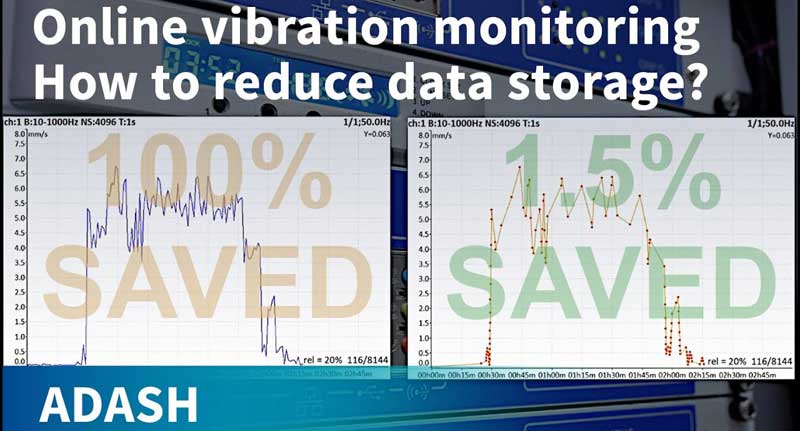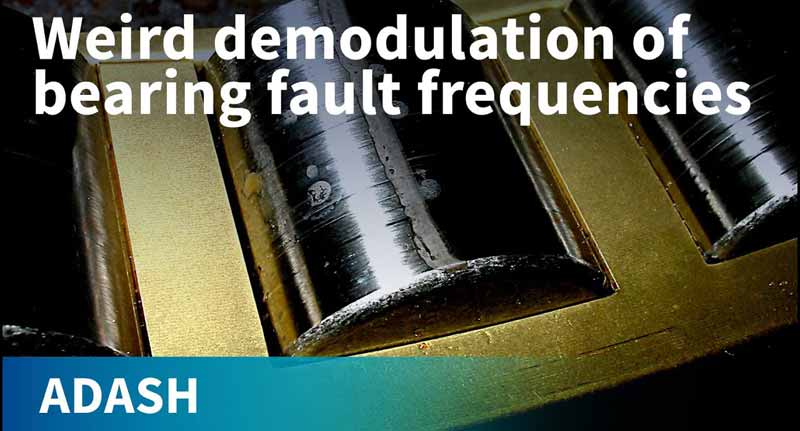A/D converter
10.08.2020
This video should explain the differences between 16 bit and 24 bit analog to digital (A/D) converters.
In the beginning I will explain a little of background. We need to convert analog signal to the digital form. We need to read the samples. You can imagine that, like voltmeter, which is moving through the signal. Now we can apply the inverse procedure and draw the signal. The other question is how often the voltmeter reads the values. The accuracy is made by the analog to digital converter chip. Chips can have various number of bits.
Each A/D converter has the voltage range, in which it can work. For example: we use the converter with plus minus twelve volts range. When the sensor sensitivity is 100mVs per g then we can operate with plus minus 120 g acceleration range. If the higher amplitude comes it is converted to the maximum value. For example: the 150 g is converted to 120 g.
Now we introduce the key factor of each converter. It is the resolution. The resolution is a number and it defines something like stripes inside the measurement range. Actually, the resolution is number of stripes.
The resolution is defined in bits, not in decimal numbers. For example: converter with 16 stripes, is 4 bit type. The highest digital number in 4 bit is 1111 It means we get 16 stripes from zero to 15. Every next bit will multiply the resolution by number 2. 5 bit gives 32, 6 bit gives 64, 7 bit gives 128 and 8 bit gives 256.
16 bit converters work with more then plus 32000 levels and minus 32000 levels. Together more then 65000 levels. 24 bits converters were a huge step forward. It works with more then 16 millions levels. What are the consequences in practice?
We talked about the voltage range plus minus 12 volts, which enables to measure 120 g peak. The sensor sensitivity is 100 mV/g. If we use the sensor with 10mV/g sensitivity, then we can measure 1200 g peak. The plus minus 12 volts range so looks as optimal. If we return back to the 8 bit converter, then we have range plus and minus 128 levels.
What is the stripe width? It is 93 mV. It is almost 1 g. It is too much. It means that everything between zero and 1g drops to one stripe. Everything between 1 and 2 g drops to next stripe. It is clear, that 8 bit for complete +/-12Vs range is not the solution.
Is 16 bits converter enough? The answer is, it is not.
The normal signals in practice can have only several mV and we need to measure them. It means we would work just with 10 or 20 lowest levels from 32 000, which are available. Imagine the scale 32 meters long. And you just use first 20 millimeters for measurement. It is bad news. You need better scale.
Because around the year 2000 mostly 16 bits converters were available, so the analyzers had to use them. But they could not use them for full volts range. The low level signals had to be amplified firstly and then converted to digital form.
If we used 16 bits resolution for full +/-12Vs range, then the step is 0,3mVs. The signal would be distorted.
How is it done in practice? After we started the measurement, firstly the gain must be find. The autogaining procedure starts. The analyzer measures the peak signal value and set the proper gain. Now the measurement starts. It seems to be fine, everything is OK. But no, it is not. The first, but not main problem is the lost time. For low speed machine the autogain may take 10 seconds for one point. It means one minute for machine with 6 points and 1 hour for 60 machines. If you have to measure hundreds machine, then it is significantly wasted time. But the main problem is different.
If the autogaining uses the low level signal part without shocks, then the incorrect gain is set. When the shock then comes during the measurement then the range is overloaded. The measurement in this case is either stopped or not, but then contains overloaded incorrect samples.
All mentioned troubles don’t exist if you use 24 bits converter. The level or stripe width is 1.4 microvolts. If we have the signal with 1.4 mV peak, then the converter doesn’t need any gaining, because 1000 levels are used for conversion. And this is the main goal, the 24 bits converter works always in full range.
You can use this test for any analyzer. Place the sensor to something soft and run the measurement. After the autogaining take the sensor and knock to the table. No warning or error has not to appear. The measurement must continue without overload problem.
Do you want to buy new analyzer? Pay attention how many bits uses the A/D converter. If less then 24 bits, then it is not recommended to buy it.






